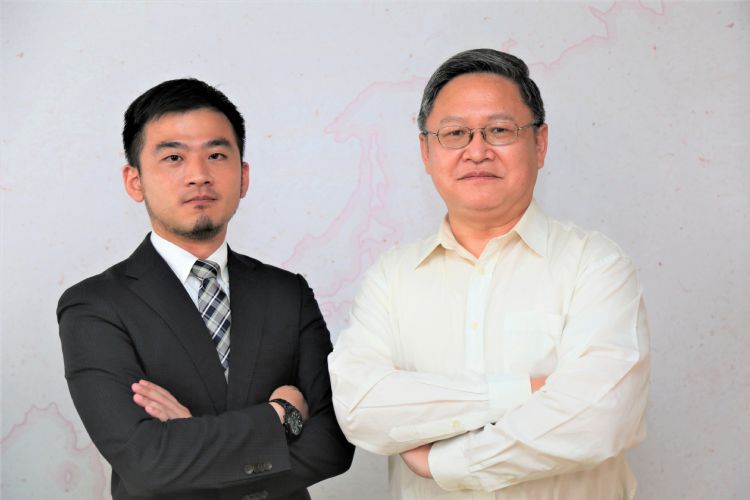Leading in self-driving technology, Taiwan's smart mobility business opportunities take shape

DIGITIMES Research analyst Yi-Fan Chen (left) and Liang-Kuang Chen (right), associate professor of the NTUST Department of Mechanical Engineering and director of its SEV Research Center.
Photo: DIGITIMES Asia
The automobile industry has encountered the biggest transformation in over a century. With the successive introduction of new technologies, what once was a vision of smart mobility is gradually becoming a reality. Although historically Taiwan was not home to large automakers, the supply chain is actually rather comprehensive, especially for self-driving technology. At present, most domestic ICT companies are actively investing in the technology and gradually establish their reputations in the industry. If Taiwan's automotive supply chains can integrate with the ICT industry, vigorous potential for future development can be expected. However, in terms of system and functional requirements and the ecosystem, the automobile industry is quite unique compared with other industries. Self-driving cars not only face a complex situation in a real-world driving scenario, but they must also pass extensive testing before any new feature can be installed on the vehicles. On the topic "Ubiquitous: Tech Leads from the Future," DIGITIMES Research analyst Yi-Fan Chen, and Liang-Kuang Chen, associate professor of the NTUST Department of Mechanical Engineering as well as director of its SEV Research Center, made a deep-dive analysis of the development of current regulatory standards and human control system design considerations for self-driving cars.
Yi-Fan Chen said that although self-driving cars have already established a trend in the auto industry, smooth real-world implementation requires that product technology, business models, standards, and social consensus, as well as other elements to be firmly in place. And these four elements are not developed independently, but are closely interrelated. Among the four, the formulation of standard specifications will help the industry and the public form a consensus, shape the next generation of vehicles through regulations, and establish the foundation for technical development among manufacturers.
In recent years, self-driving technology has progressed at a rapid pace, and more and more manufacturers are investing in the field. To gain a clearer framework for direction in which technology will be developed, many organizations have begun to revise or release new standards. Some of the more representative standards are SAE and ISO, which are working together to redefine the levels of driving automation. In the new SAE J3016 standard, two levels, L1 and L2, are classified as "driving support", and only L3 to L5 are considered "automated driving." This standard also supplements L3 and L4 with DDT (Dynamic Driving Task) fallback, remote control, and near-field assistance.
The UNR 157 Automated Lane Keeping Systems (ALKS), which is regarded as an early-stage intelligent driving system, went into effect in January 2021. This standard, formulated by the United Nations Economic Commission for Europe (UNECE), is mainly used with the L3 self-driving system, which controls the longitudinal and lateral directions of the vehicle, allowing the vehicle to maintain forward motion without driver intervention. In terms of manufacturer progress, a small number of L3 models from major European and Japanese automakers have hit the market, and the L4 standard ISO 22737 was released in July 2021. Two major norms and standards exist for information security, namely UNR 155 Cyber security and cyber security management system and ISO 21434 Road vehicles - Cybersecurity engineering. These standards are applicable to vehicles of L3 and above, and will help realize future commercial applications of self-driving cars and services.
In addition to regulations and standards, the manual control system is also crucial to whether self-driving cars can drive onto the road smoothly. Liang-Kuang Chen said that the original objective of founding the SEV Research Center at NTUST was to link the resources and strengths of industry and academia to help the Taiwanese industry master self-driving car technologies. The driving simulator recently developed by the center's laboratory can emulate various conditions that the vehicle may encounter on the road, which can also serve as a design reference for self-driving systems.
Liang-Kuang Chen further pointed out that self-driving cars are currently at the junction of L2 and L3. The significance of this junction is that the driver and the system switch their roles in terms of which one is controlling the vehicle; after entering L3, the system controls the vehicle mostly and the driver becomes a supervisor. Only in certain circumstances does the driver take over, but the question is: under what circumstances? And how does the transition of the control authority occur? This requires advanced clarification in the system design phase. There are many possible causes for vehicle accidents with different automated features. Failure modes and effects analysis (FMEA) must be adopted: first, the problem should be defined, the failure conditions are listed individually, and then the quantitative model and behavior analysis are performed; finally, the system can be designed to prevent each kind of accidents. Although the whole process can be very exhausting, it is necessary for vehicle safety. The driving simulator designed by SEV Research Center can investigate the interactions between human beings and vehicle systems to identify possible responses of the driver when confronting various situations during self-driving, thus bringing the design of self-driving systems closer to reality.
Liang-Kuang Chen believes that the future development of self-driving cars is in clarifying the rights and responsibilities of users and vehicle systems - a priority for the development of this industry. At present, countries are promoting sandbox programs, which will help clarify rights and responsibilities. Industry, government, and academia, for their part, should gradually promote different self-driving functions step-by-step, thereby accumulating confidence of the industry and society toward self-driving.
Article Extraction from DIGITIMES
https://www.digitimes.com/news/a20220802VL208.html?mod=2
